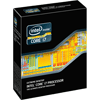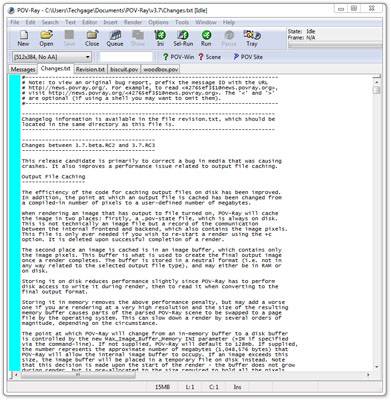- Qualcomm Launches Snapdragon 4 Gen 2 Mobile Platform
- AMD Launches Ryzen PRO 7000 Series Mobile & Desktop Platform
- Intel Launches Sleek Single-Slot Arc Pro A60 Workstation Graphics Card
- NVIDIA Announces Latest Ada Lovelace Additions: GeForce RTX 4060 Ti & RTX 4060
- Maxon Redshift With AMD Radeon GPU Rendering Support Now Available
Intel Core i7-3960X Extreme Edition Review

To those looking to build the biggest, baddest high-end PC around, the wait for Sandy Bridge-E was no doubt painful. But, it’s finally here, and much to our expectations, Intel has once again solidified its position as the performance leader. So let’s take a look at what it offers, and compare it to the i7-990X, i7-2600K and AMD FX-8150.
Page 5 – Workstation: Cinebench R11.5 & POV-Ray 3.70
Like Autodesk’s 3ds Max and Maya 3D tools, Maxon’s Cinema 4D is a popular cross-platform 3D design tool that’s used by new users and experts alike. Maxon is well-aware that its users are in need of some rather beefy PC hardware to help speed up rendering times, which is one of the reasons the company itself releases its own benchmark, Cinebench.
There are a couple of reasons we like to use Cinebench in our testing. For one, it’s freely available for anyone to download, unlike our Autodesk-based tests. Second, it has the capability to scale up to 64 threads, which means we’ll easily be able to rely on it until the next version hits. As a faster CPU can also help improve the GPU computational pipeline, we also like that it includes an OpenGL benchmark as well. The fact that the benchmark completes in mere minutes is another perk.


Here, the Core i7-3960X rightly trumps the other CPUs we tested with, including its predecessor, the i7-990X. It’s clear that both the Sandy Bridge and Sandy Bridge-E architecture also has the ability to improve GPU rendering performance, as both the similarly-clocked i7-3960X and i7-2600K saw nearly identical OpenGL results, despite having a different number of cores.
POV-Ray 3.70
The “Persistence of Vision Ray Tracer” is a multi-platform ray tracing tool that allows you to take your previously-created environments and models and apply a ray tracing algorithm based on a script you either created yourself or borrowed from others. The tool is free and has become a standard in the ray tracing community, with some of the ‘Hall of Fame’ results able to be found here.
For our testing, we run the built-in benchmark in both single-threaded and multi-threaded mode. The results are presented in “pixels-per-second” – a simple metric, but one that’s easily understood by anyone.

As expected, the i7-3960X and i7-2600K performed similarly in the single-threaded test, but when moving to a multi-threaded one, we see a staggering 50% performance improvement. With this graph, it’s also easy to see how Sandy Bridge architectural improvements can improve single-threaded performance in some cases, with the i7-990X falling far behind in that regard.
Support our efforts! With ad revenue at an all-time low for written websites, we're relying more than ever on reader support to help us continue putting so much effort into this type of content. You can support us by becoming a Patron, or by using our Amazon shopping affiliate links listed through our articles. Thanks for your support!







